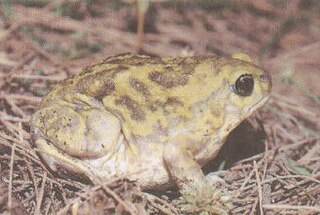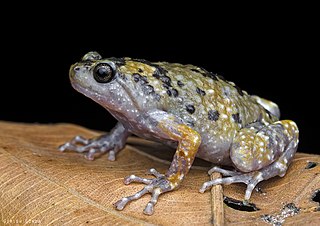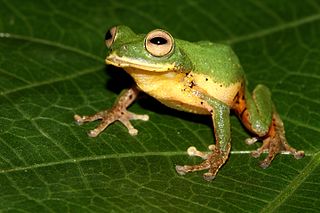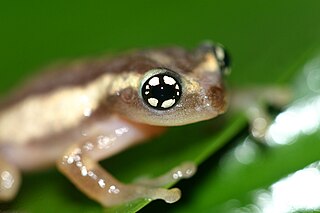
The Western Ghats, also known as the Sahyadri mountain range, is a mountain range that covers an area of 160,000 km2 (62,000 sq mi) in a stretch of 1,600 km (990 mi) parallel to the western coast of the Indian peninsula, traversing the states of Gujarat, Maharashtra, Goa, Karnataka, Kerala and Tamil Nadu. It is a UNESCO World Heritage Site and is one of the 36 biodiversity hotspots in the world. It is sometimes called the Great Escarpment of India. It contains a very large proportion of the country's flora and fauna, many of which are endemic to this region. The Western Ghats are older than the Himalayas. They influence Indian monsoon weather patterns by intercepting the rain-laden monsoon winds that sweep in from the south-west during late summer. The range runs north to south along the western edge of the Deccan Plateau and separates the plateau from a narrow coastal plain called the Western Coastal Plains along the Arabian Sea. A total of 39 areas in the Western Ghats, including national parks, wildlife sanctuaries and reserve forests, were designated as world heritage sites in 2012 – twenty in Kerala, ten in Karnataka, six in Tamil Nadu and four in Maharashtra.

Microhyla sholigari is a species of microhylid frog endemic to southern India. It was described from the Biligirirangan Hills in Chamarajanagar district, Karnataka and is named after the Soliga tribal people living in the forests in and around these hills. The frog was thought to be endemic to the Western Ghats and known only from the type locality and another location in Kerala and was listed as an Endangered species. A recent study reported the species from 15 localities in the central Western Ghats with individuals sighted near the Bannerghatta National Park, Bangalore, Karnataka. The study supplemented the original species description with color photographs, call recordings and provided a re-assessment of the threat status as per the IUCN Red List and suggest the status as Least-concern species because the criteria for classifying it as an endangered species are no longer fulfilled.

Uperodon is a genus of microhylid frogs. They occur in South Asia and Myanmar. Uperodon reached its current composition in 2016 when the genus Ramanella was brought into its synonymy. The common names of these frogs are globular frogs and balloon frogs in reference to their stout appearance, or dot frogs, the last specifically referring to the former Ramanella.

Uperodon montanus, also known as Jerdon's narrow-mouthed frog, Jerdon's ramanella, mountain dot frog, mountain globular frog, or Malabar Hill frog, is a species of narrow-mouthed frog endemic to the Western Ghats of India.

Uperodon taprobanicus, also known as the Sri Lankan bullfrog, Sri Lankan painted frog, Sri Lankan kaloula, Ceylon kaloula, Indian painted frog, or painted globular frog, is a species of narrow-mouthed frog found in Nepal, Bangladesh, southern and eastern India, and Sri Lanka up to an altitude of about 1300 metres. It can grow to an adult length of up to 75 millimetres(7.5 cm) long from snout to vent. It was originally described as a subspecies of Kaloula pulchra, ssp. taprobanica. The IUCN lists it as being of "Least Concern".

Uperodon anamalaiensis, also known as Anamalai dot frog, Anamalai ramanella, or reddish-brown microhylid frog, is a species of narrow-mouthed frog found in South India. The holotype was discovered at the base of the Anaimalai Hills, Coimbatore district in the southern Western Ghats. The holotype is missing and the status of the species was uncertain till 2010. Until rediscovered in the Parambikulam Wildlife Sanctuary in 2010, this frog was reported only once by C. R. Narayan Rao in 1937.

Uperodon mormorata, also known as the Indian dot frog, marbled ramanella, dark-banded frog, and mottled globular frog, is a species of narrow-mouthed frog endemic to the Western Ghats of southwestern India. It was previously placed in the genus Ramanella. It has only been reported from three locations, though locally found in some numbers.

Uperodon variegatus, also known as the Eluru dot frog, termite nest frog, variable ramanella, variagated ramanella, white-bellied pug snout frog, or variagated globular frog, is a species of narrow-mouthed frog that is endemic to India. Earlier records from Sri Lanka refer to what is now known as Uperodon rohani. They are seen mostly in the monsoon season when they may enter homes. They are small in size and the variegated markings and the genus characteristic of having pads on the fingertips but not on their toes make them easy to identify.

Uperodon globulosus, or Indian balloon frog, is a species of narrow-mouthed frog found in India, Nepal, and Bangladesh. It is known under many common names: Indian globular frog, Indian balloon frog, grey balloon frog, and greater balloon frog. Specimens from the Western Ghats may represent an undescribed species.

Uperodon systoma is a species of narrow-mouthed frog found in Pakistan, India, Nepal, and Sri Lanka. It is known under many different common names: indistinct frog, marbled balloon frog, and lesser balloon frog.
Indirana tenuilingua is a species of frog that is considered nomen inquirendum. It is only known from the type series, now lost, from its type locality, Kemphole, in the Western Ghats of India. It is sometimes known as Rao's Indian frog or slender-tongued frog.
Uperodon nagaoi, also known as the Nagao's pug-snout frog or Nagao's globular frog, is a species of frogs in the family Microhylidae. It is endemic to Sri Lanka and is known from the Central, Sabaragamuwa, Southern, and Western Provinces. The specific name nagaoi honours Eijiro Nagao, president of Marusan Securities who, through the Nagao Environmental Foundation, has supported research on Sri Lankan amphibians.

Raorchestes flaviventris is a species of arboreal, nocturnal, frog of the family Rhacophoridae. It is endemic to the Western Ghats, South India. Its common name is yellow-bellied bush frog.

Raorchestes travancoricus, variously known as the Travancore bushfrog, Travancore bubble-nest frog, or Travancore tree frog, is a species of frog in the family Rhacophoridae. The species is endemic to the southern Western Ghats, India. Its specific name, travancoricus, as well as its three common names, refer to its type locality, Bodinayakkanur in the former Travancore state.

Rhacophorus lateralis is a rhacophorid tree frog endemic to the Western Ghats in South India. It has several common names: small tree frog, Boulenger's tree frog, small gliding frog, and winged gliding frog. After its original description in 1883 by George Albert Boulenger, the frog was rediscovered in Coorg in 2000 and has since been found in many parts of the Western Ghats around southern Karnataka and northern Kerala. Along with R. malabaricus, it is one of the few anuran amphibians in India that constructs its nest above the ground using leaves.

Raorchestes ochlandrae is a species of shrub frog in the family Rhacophoridae. It is endemic to the Western Ghats, India. This species of the oriental shrub frog was first described from Kakkayam Reserve Forest of Calicut district, Kerala state, in the southern Western Ghats in 2007 but has since been recorded at many other sites along the Western Ghats. The specific name ochlandrae refers to microhabitat of the species, bamboo Ochlandra setigera.

Raorchestes resplendens, the resplendent shrubfrog, is a critically endangered species of frog belonging to the family Rhacophoridae endemic to the high altitude region around the south Indian peak of Anaimudi. It has extremely short limbs and numerous macroglands and was discovered from the Anamudi summit in the Western Ghats of Kerala, India and is known only from the Eravikulam National Park.

Minervarya nilagirica, commonly known as Nilgiris wart frog, or Nilgiris frog, is a species of frog that is endemic to India.

Raorchestes is a genus of frogs in the subfamily Rhacophorinae that are found in mountainous regions of South Asia, Southeast Asia, and southern China. A recent study places Raorchestes as a sister taxon of Pseudophilautus. Before the description of the genus in 2010, species now in Raorchestes had been assigned to genera Ixalus, Philautus, and Pseudophilautus.

















